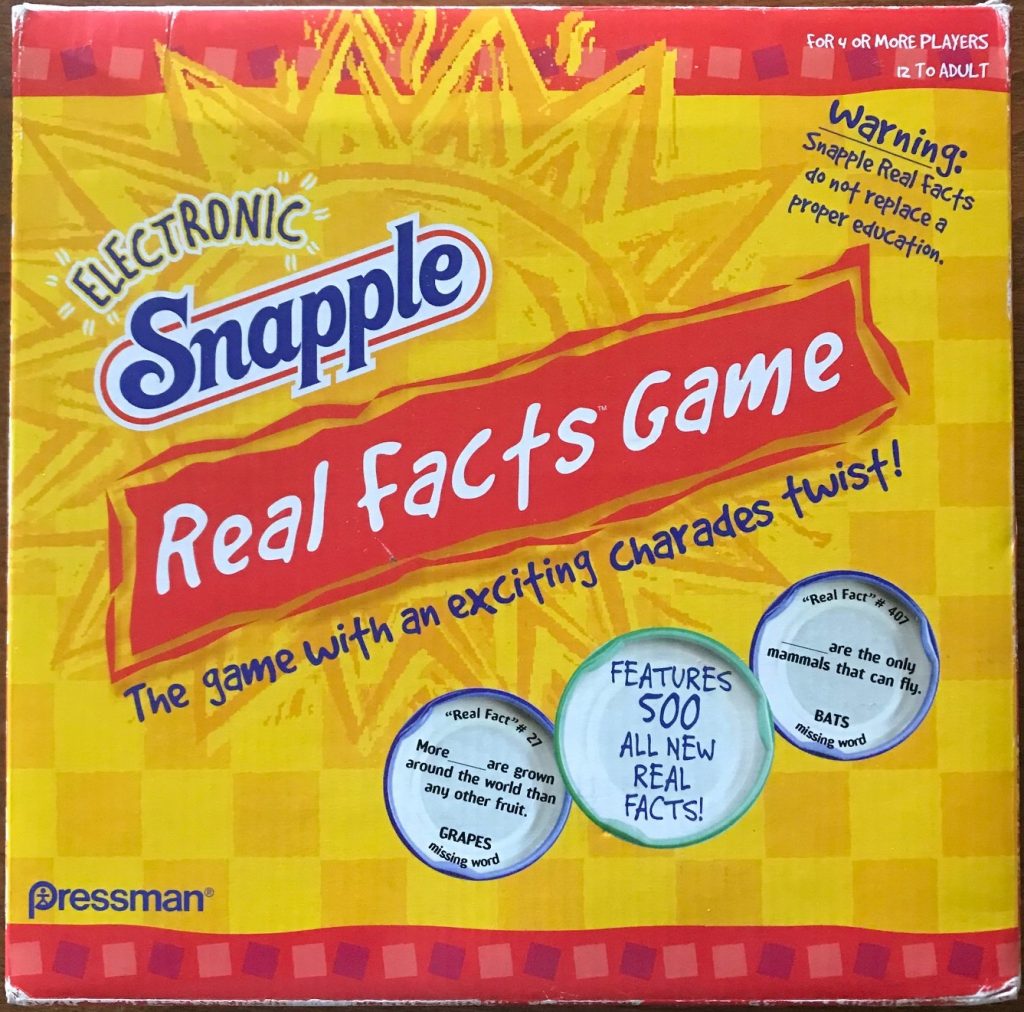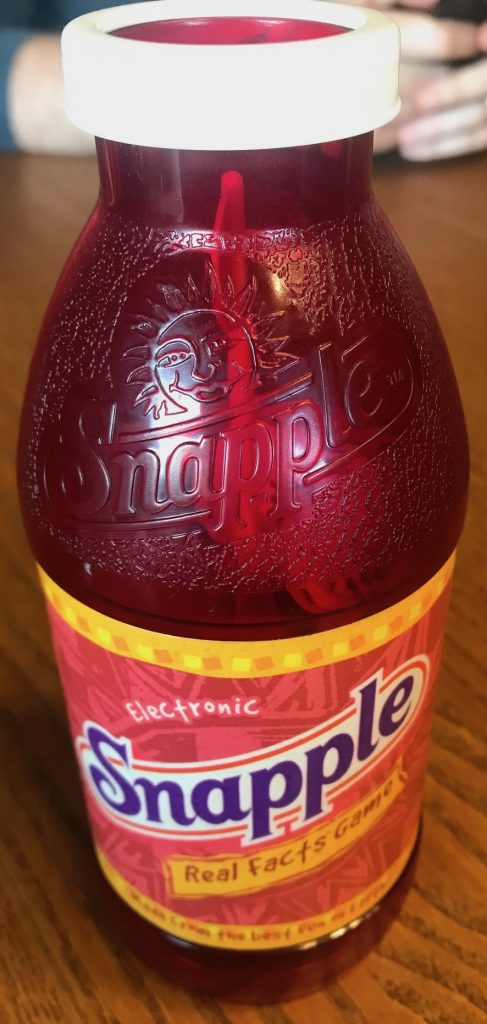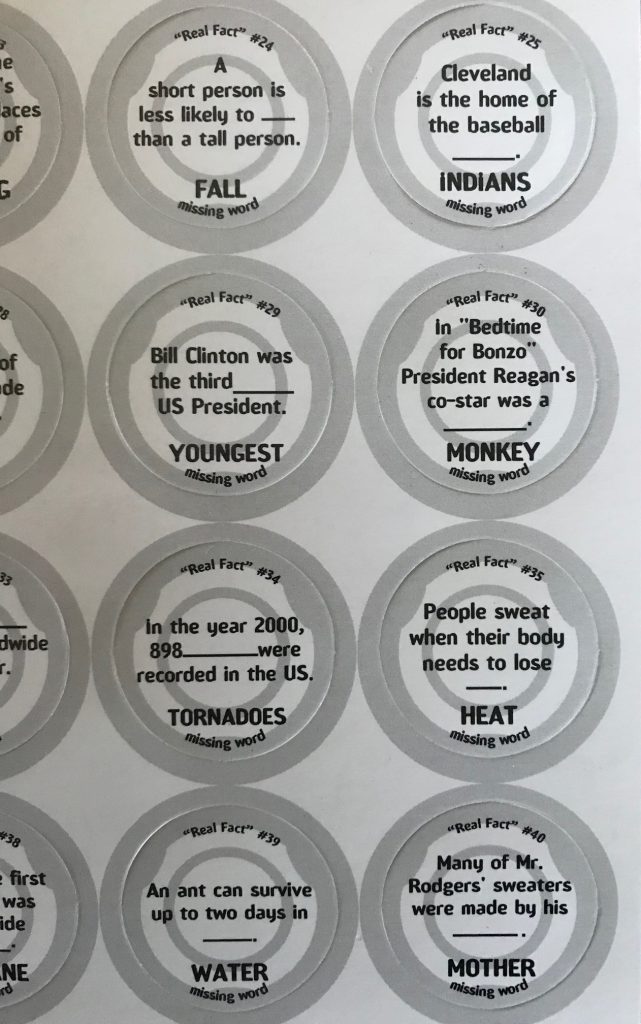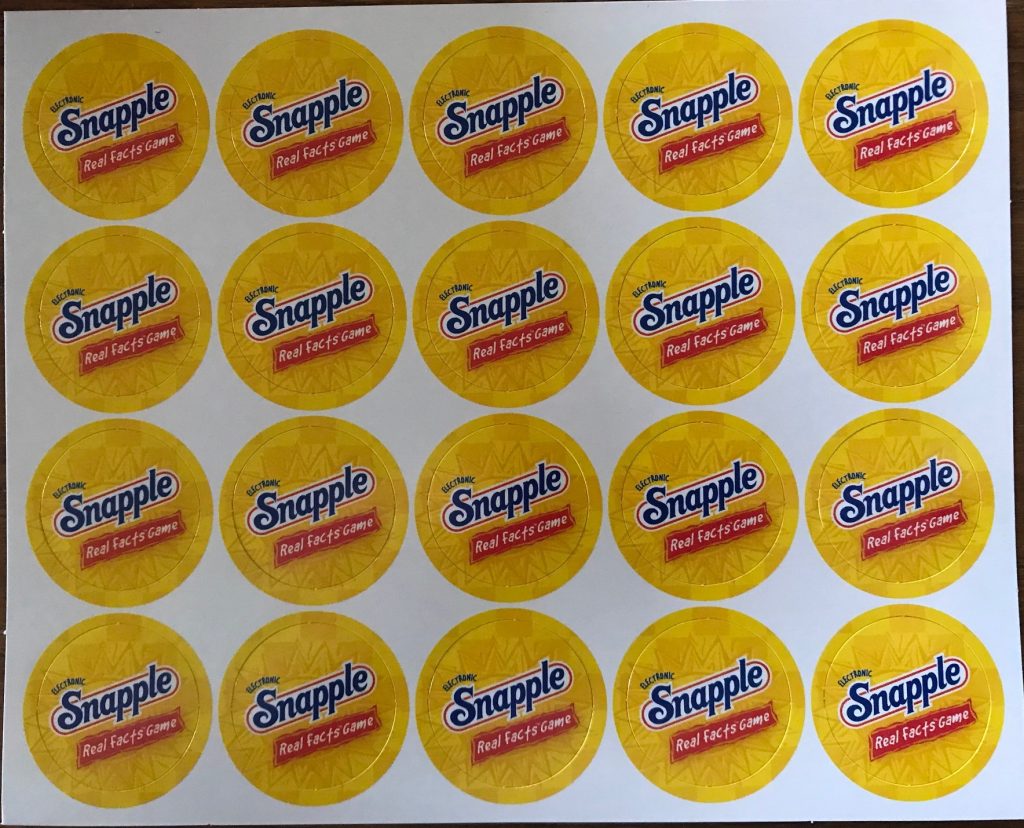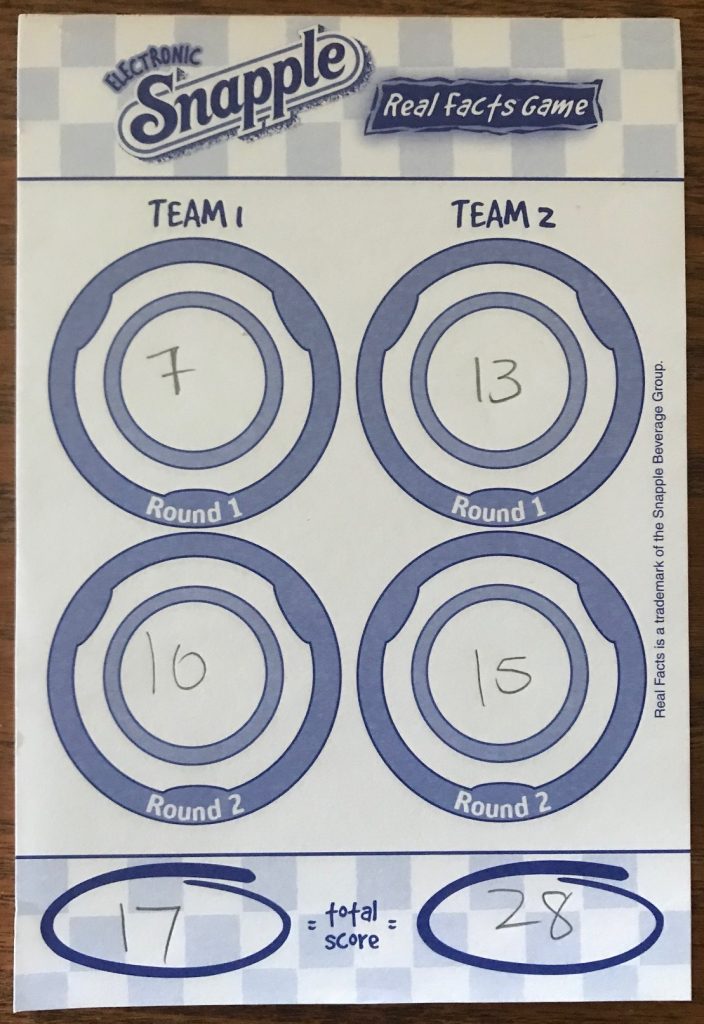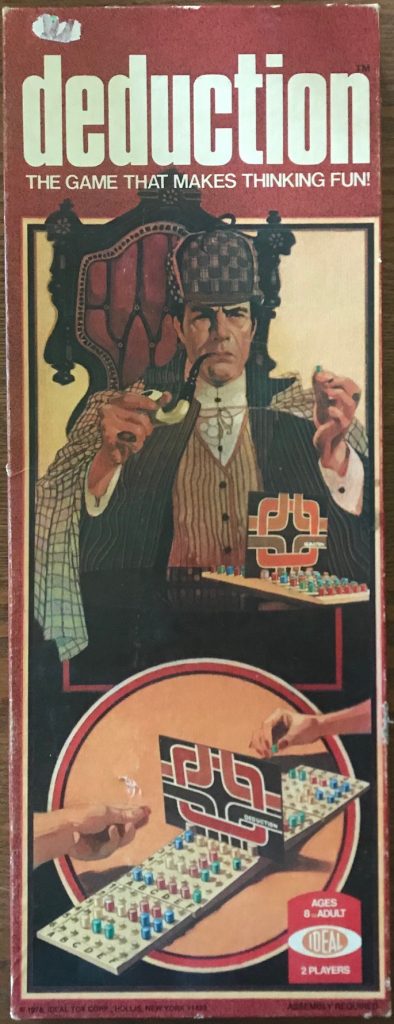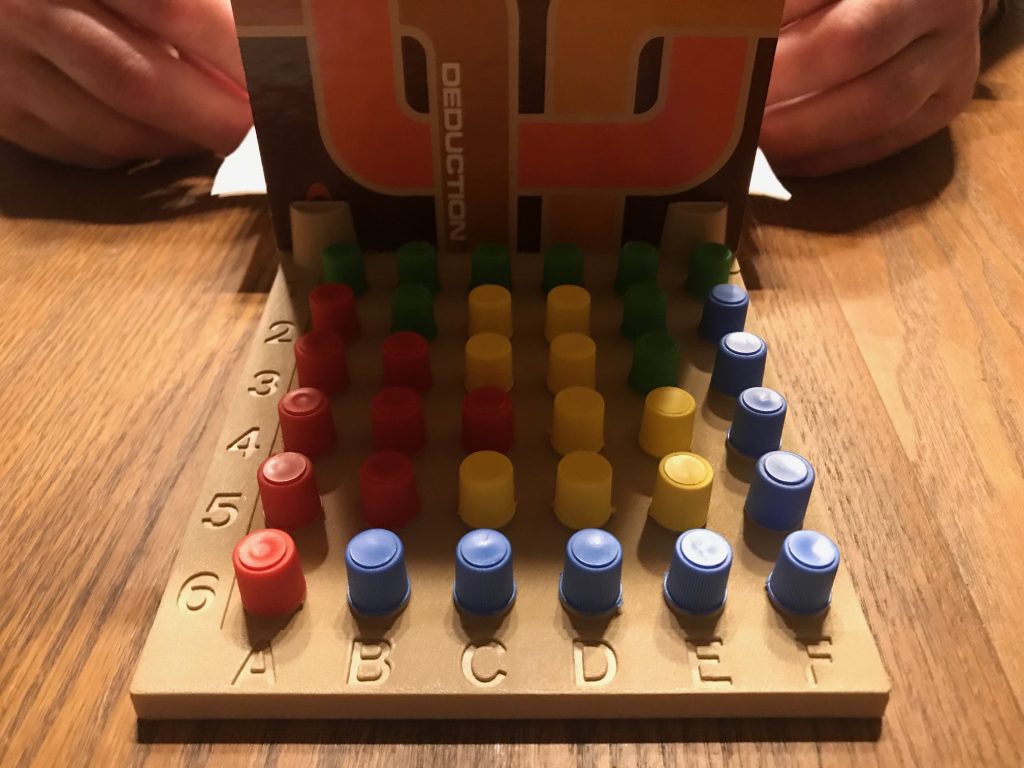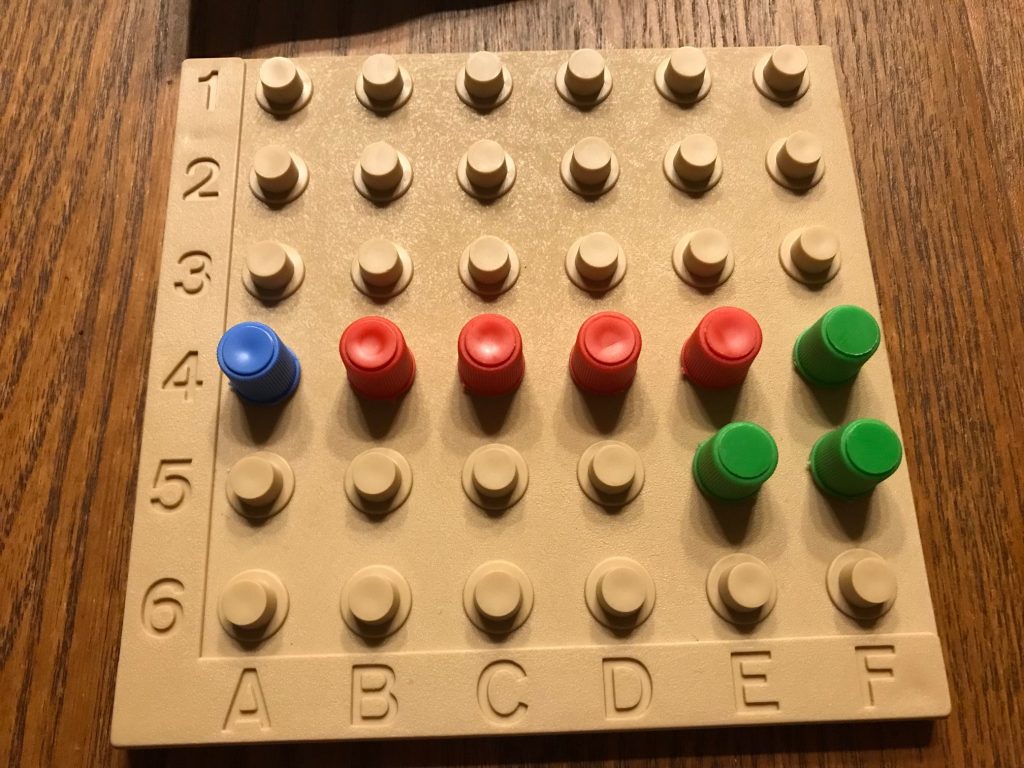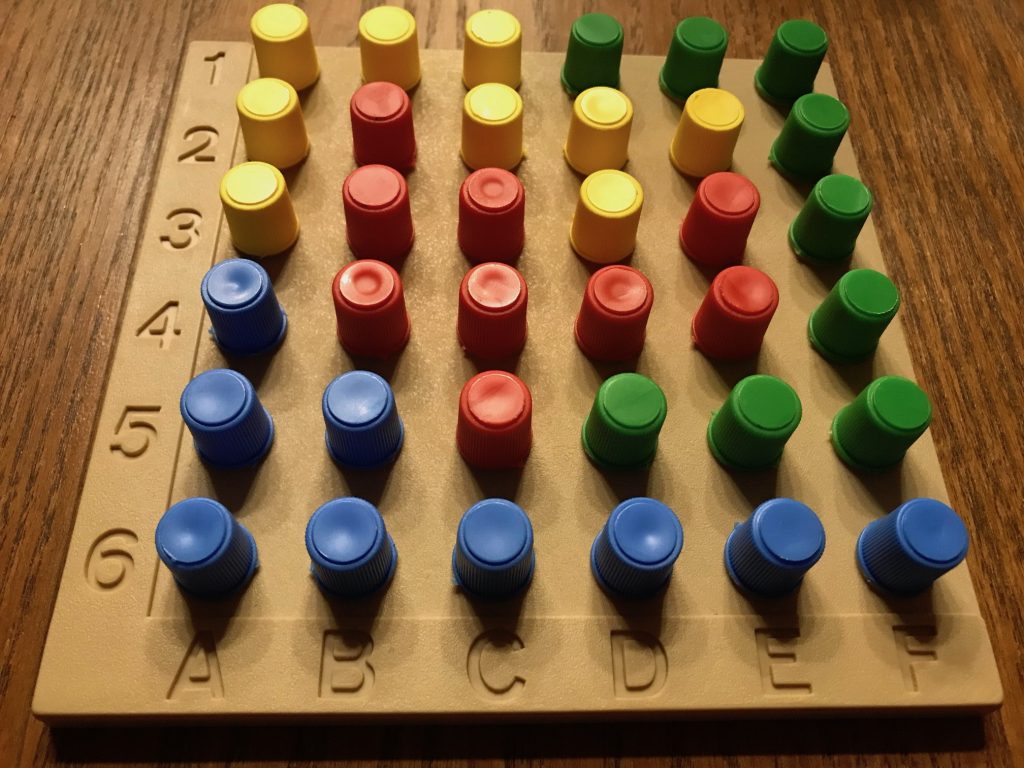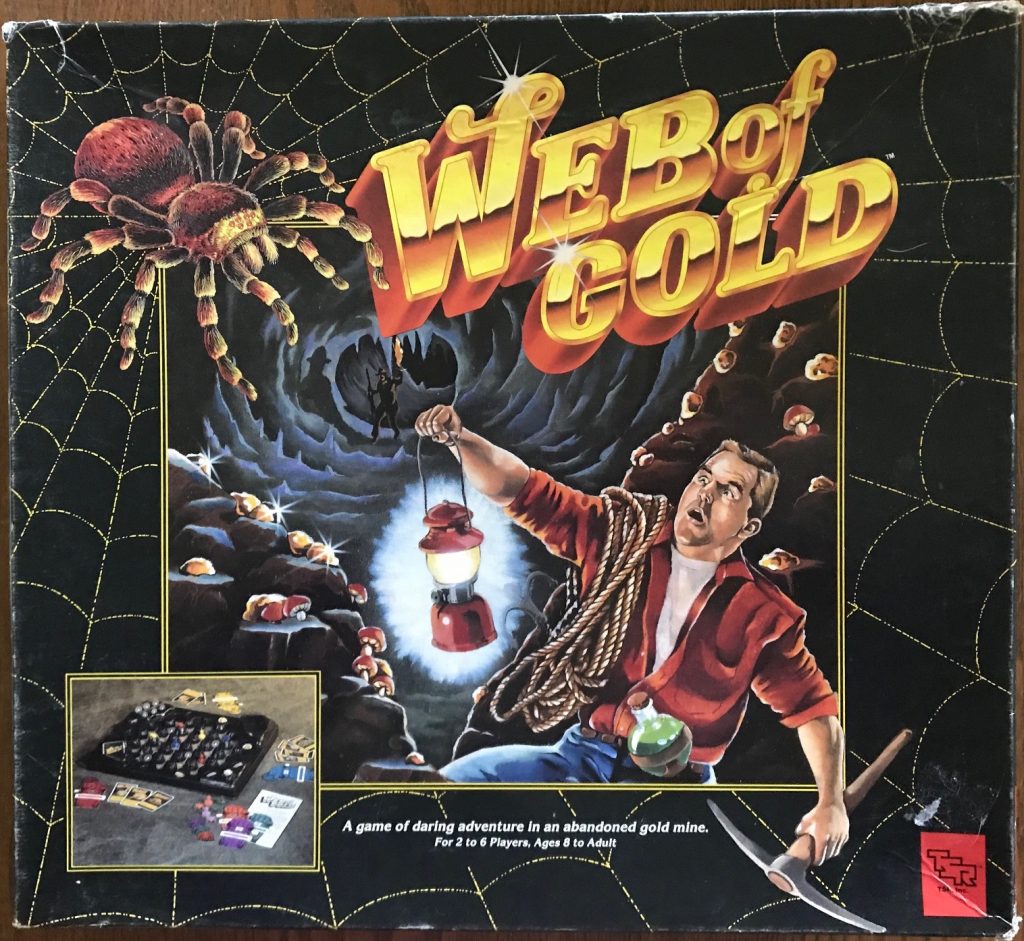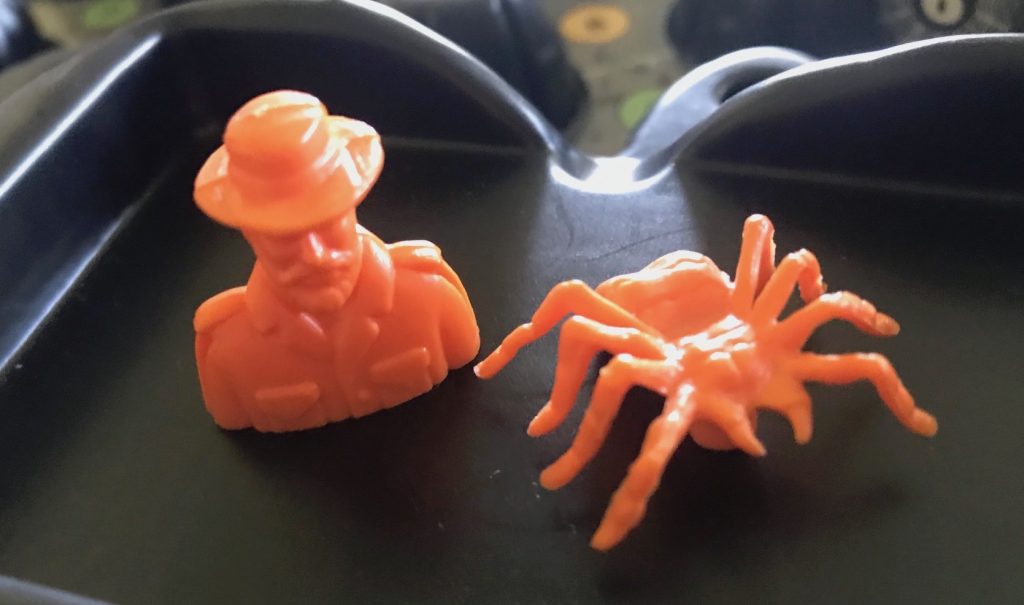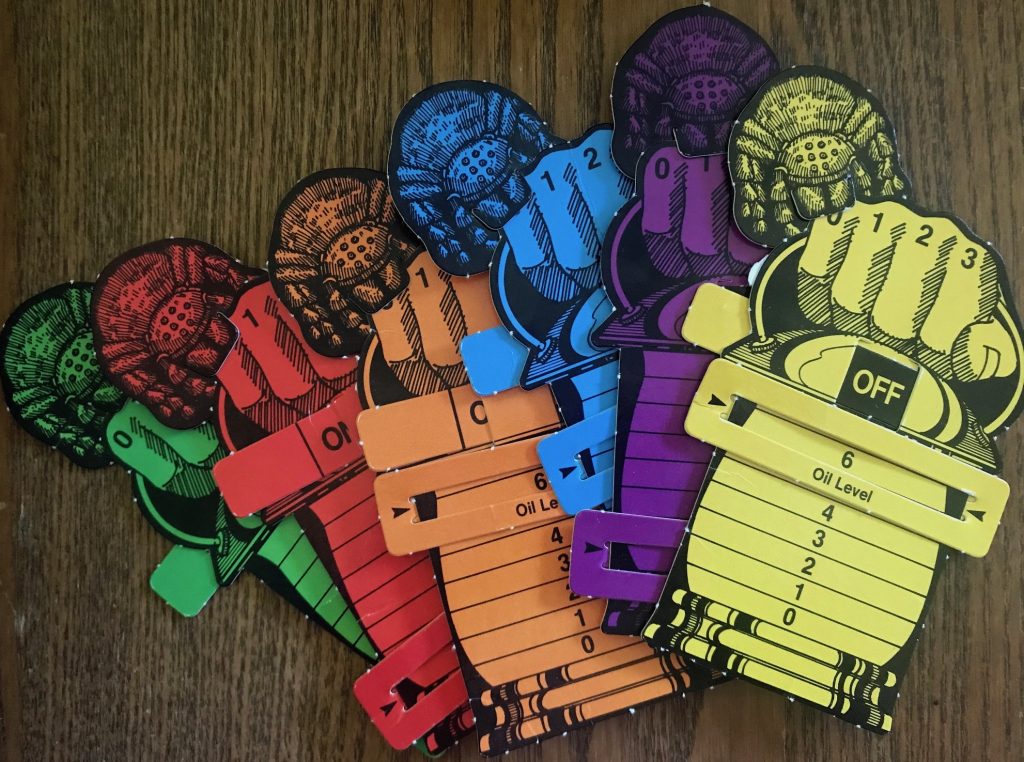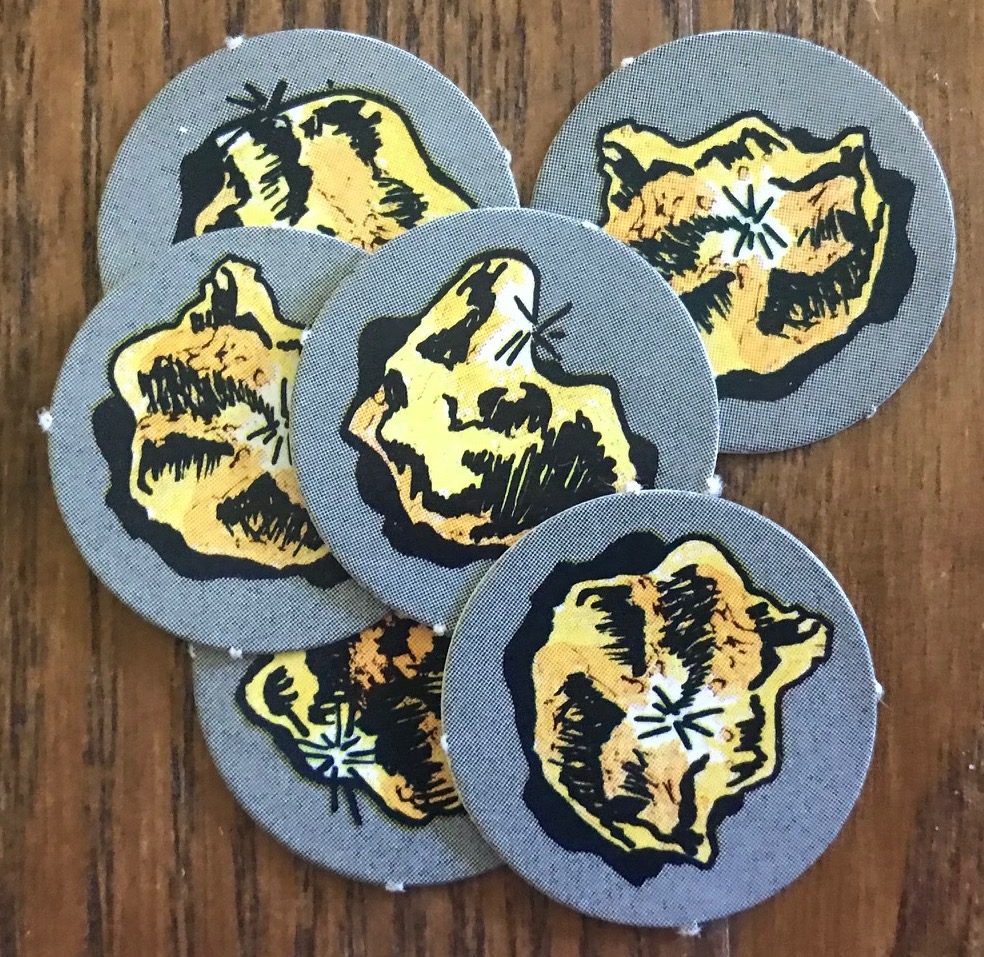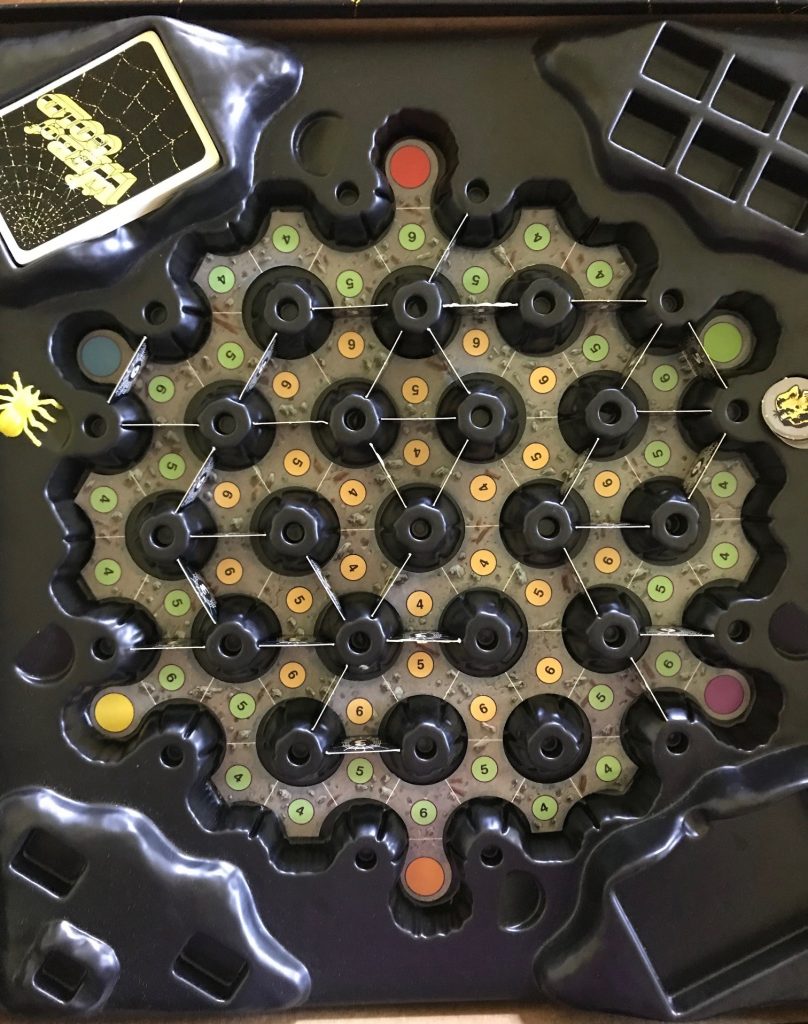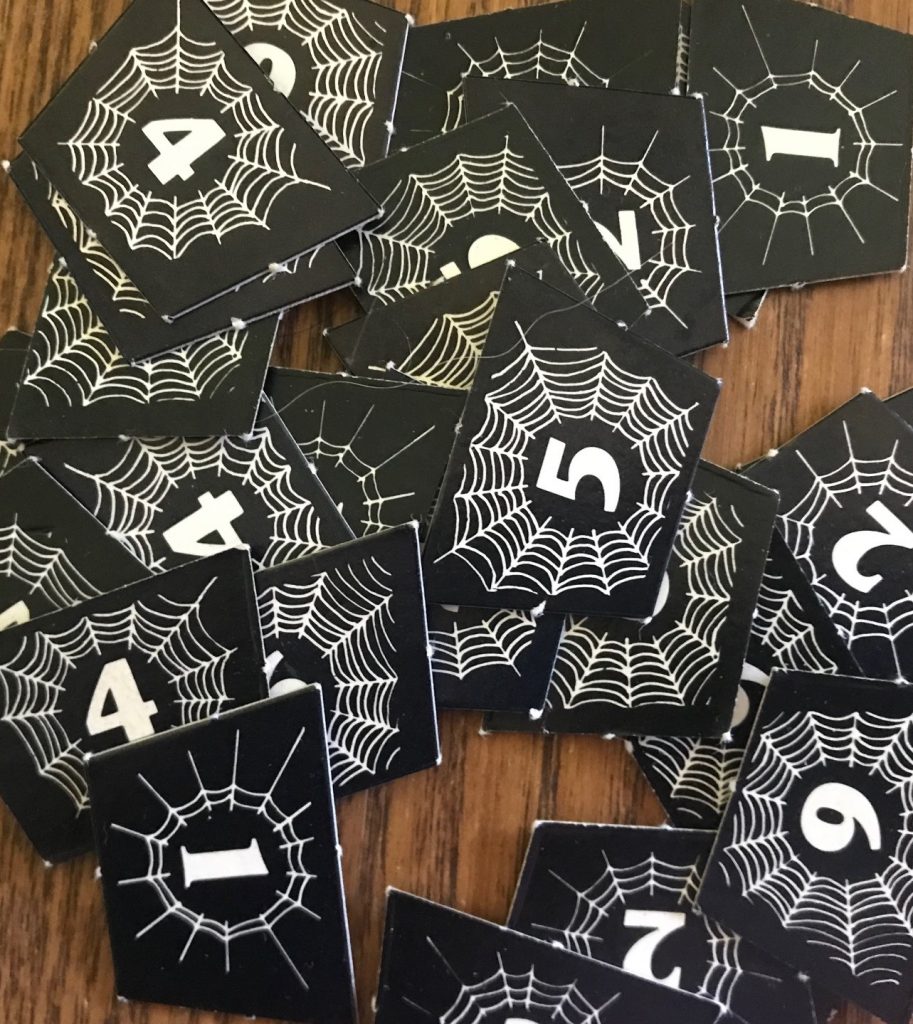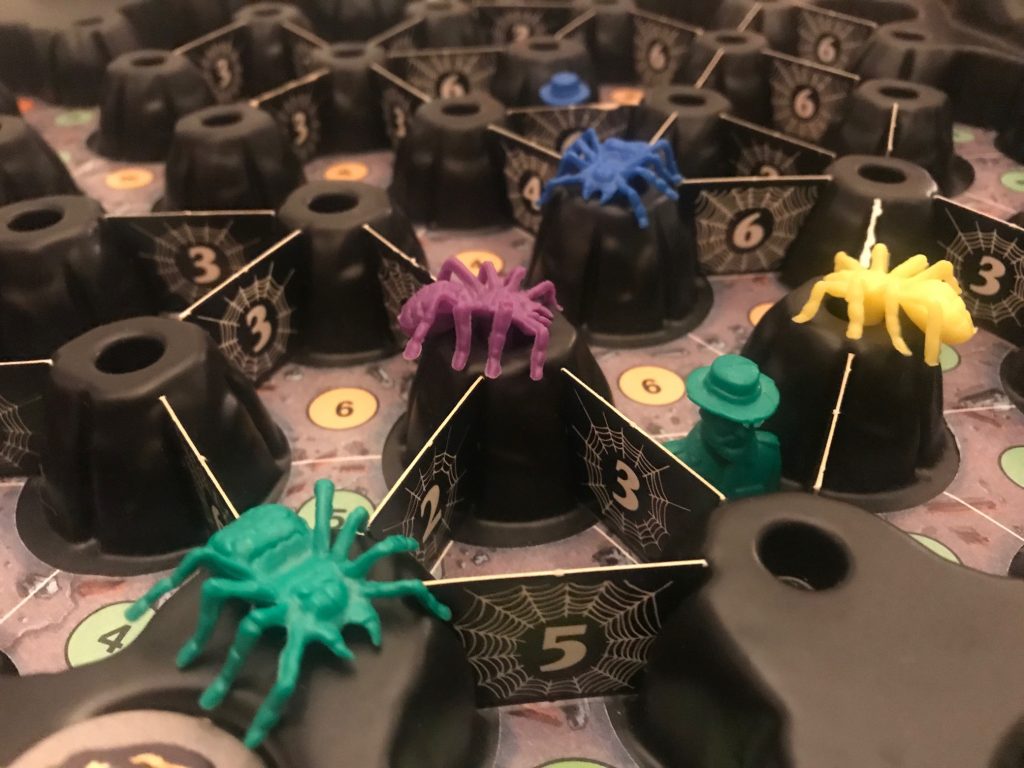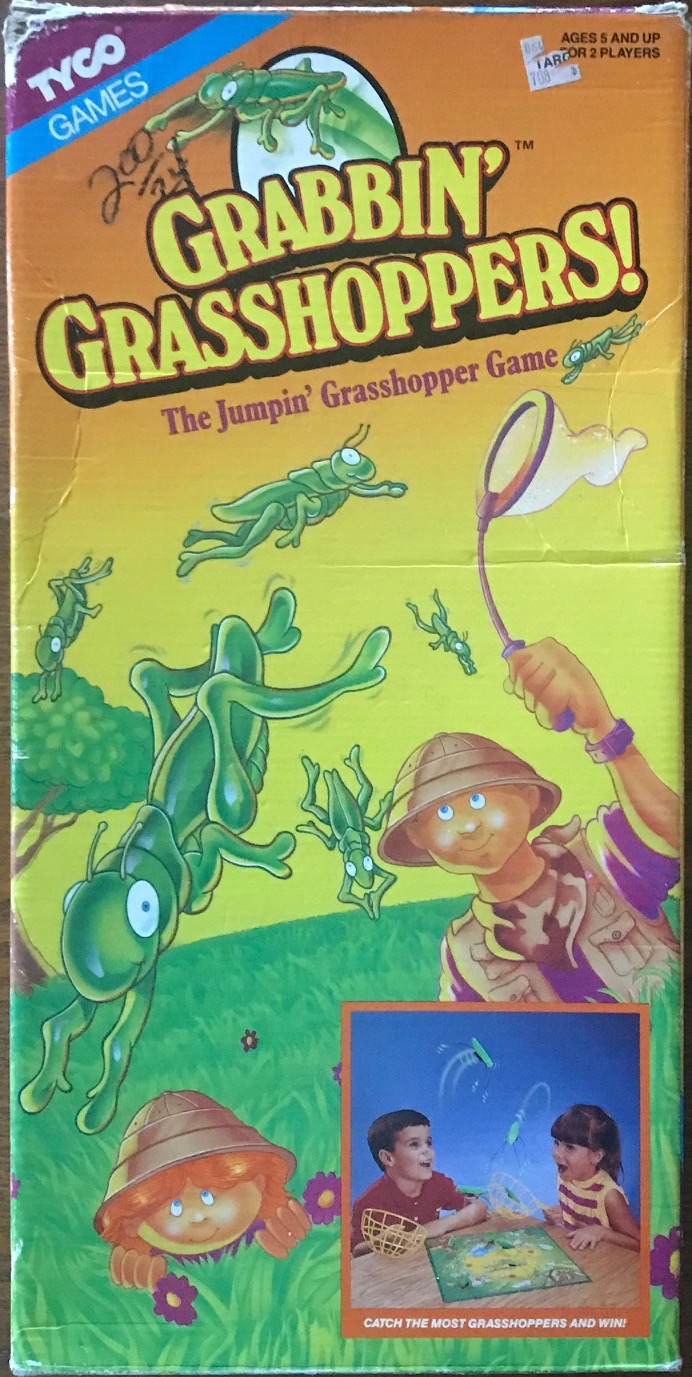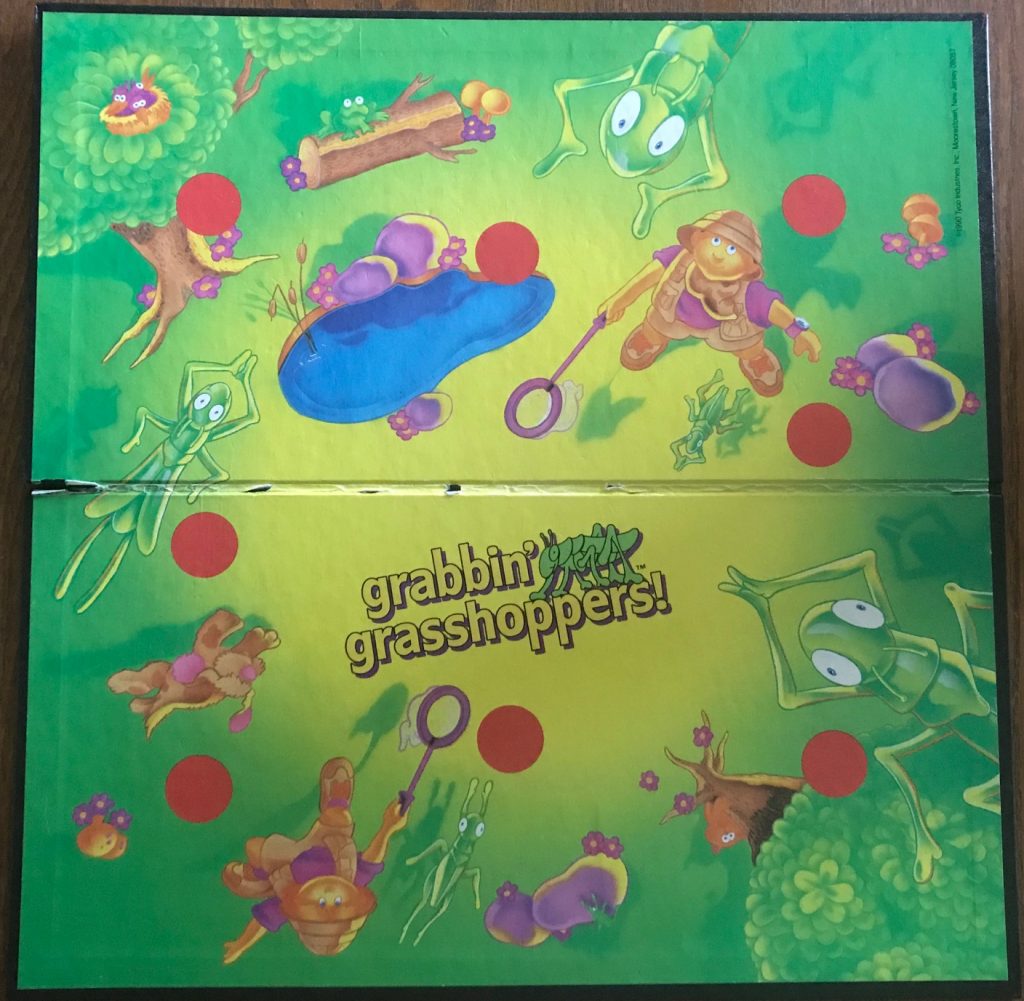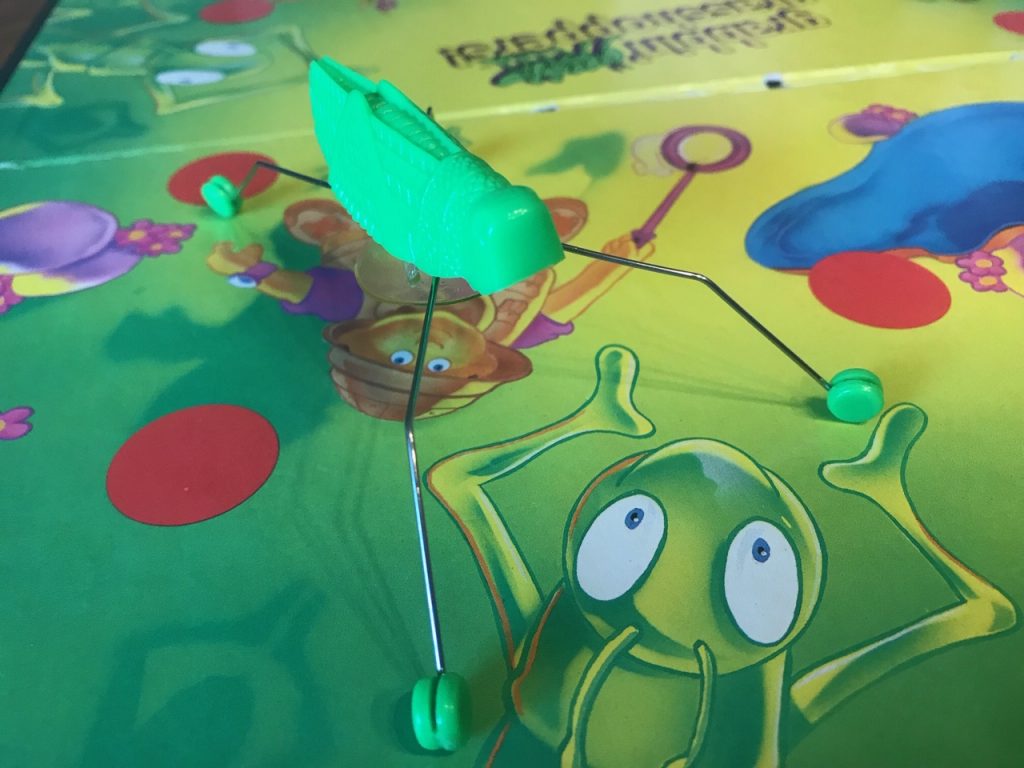Review: Ghost Party
Publisher: Ravensburger
Year: 1992
Tagline: Keep on Running… THE GHOST IS COMING!

how we met
Okay, don’t hate me. I have known about Ghost Party as a game for several years now, and I would have picked it up in a heartbeat. But I never did find it. Until I did. I found an immaculate copy of Ghost Party at thrift for $2.99. And that’s how we met.
how it plays
Ghost Party is pretty unusual in that all of the points accumulated are negative, so your object is to have the fewest penalty points. The player with the fewest penalty points wins!
The number of pawns in the game will depend greatly on the number of players in the game. For our play, we had four players with four pawns each in our chosen colors. Play can go as low as two players and as high as eight players!
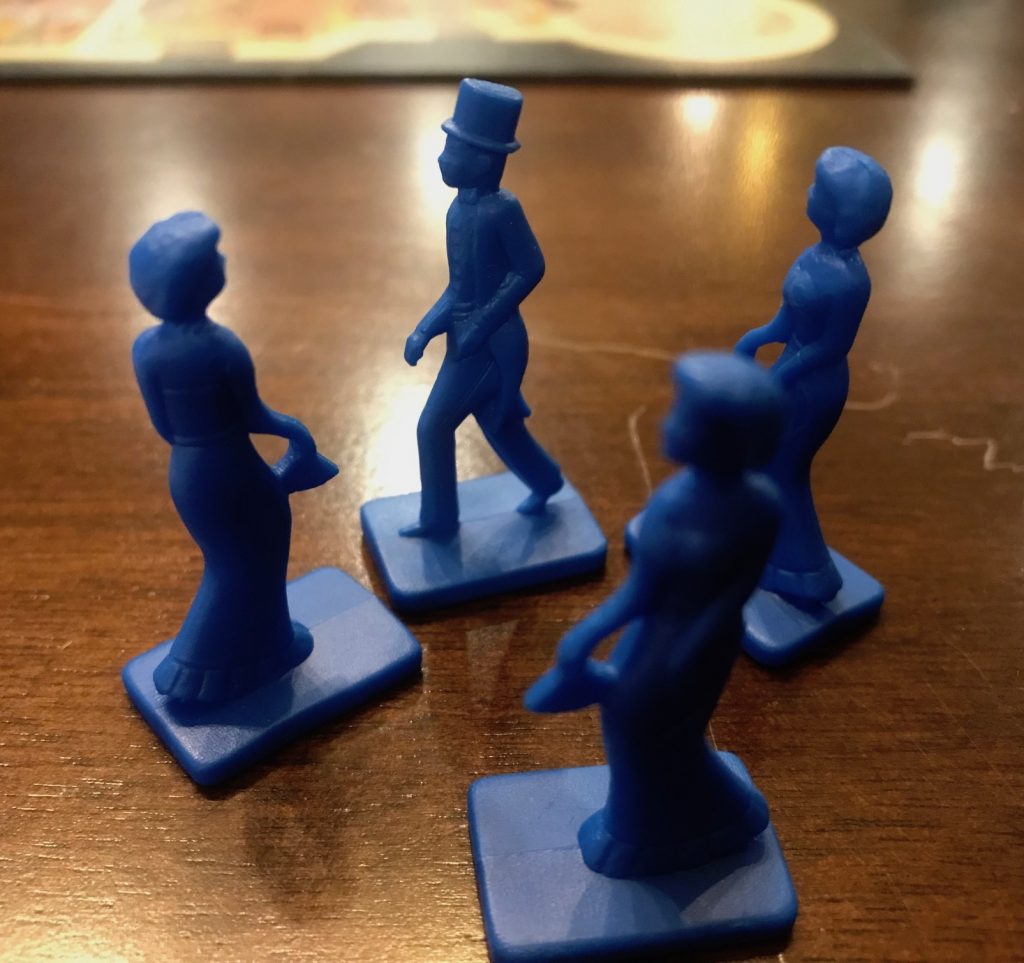
Each game has three rounds. Each round, Hugo the Ghost starts at the bottom of the stairs. The player to go first places their first pawn in any unoccupied space in the gallery, and then players take turns doing the same until all figures are in place. Only one pawn can occupy a given space.
On a player’s turn they roll the die. If they roll a number, the player moves one of their pawns that many spaces. If they roll a ghost symbol, they move the ghost, Hugo, three spaces. He moves up the stairs and then clockwise around the gallery.
Once Hugo reaches the top of the stairs, the rooms to the doors are open to pawns. Only one pawn may enter each room, and it doesn’t need to be by exact count except with the Trophy Room and Playroom. Those two rooms award you with +3 points and do need to be occupied by exact count. That’s only fair.
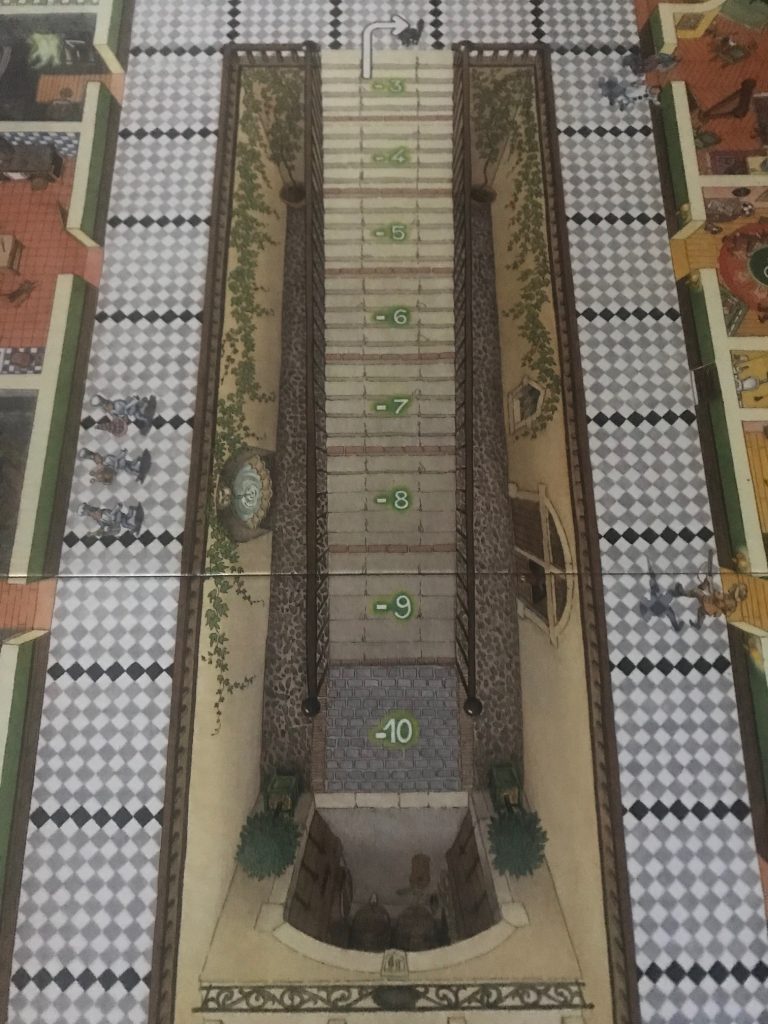
Moving from the gallery into a room costs one movement. It also makes that pawn safe from Hugo.
Apart from the rooms mentioned above, the other two “special” rooms are the Library and the Laundry Room. These rooms each have ghosts in them! They will give you -1 point during scoring, but that might be your best option so don’t stick your nose up at those rooms.
If a player has more than one pawn in the gallery, they have to move. If they have only one left then they can instead choose to hope for a better roll, for example to try for the Trophy Room or Playroom.
If a player’s pawns are all safe or captured, they must still roll the die. If they roll Hugo then he gets to move.
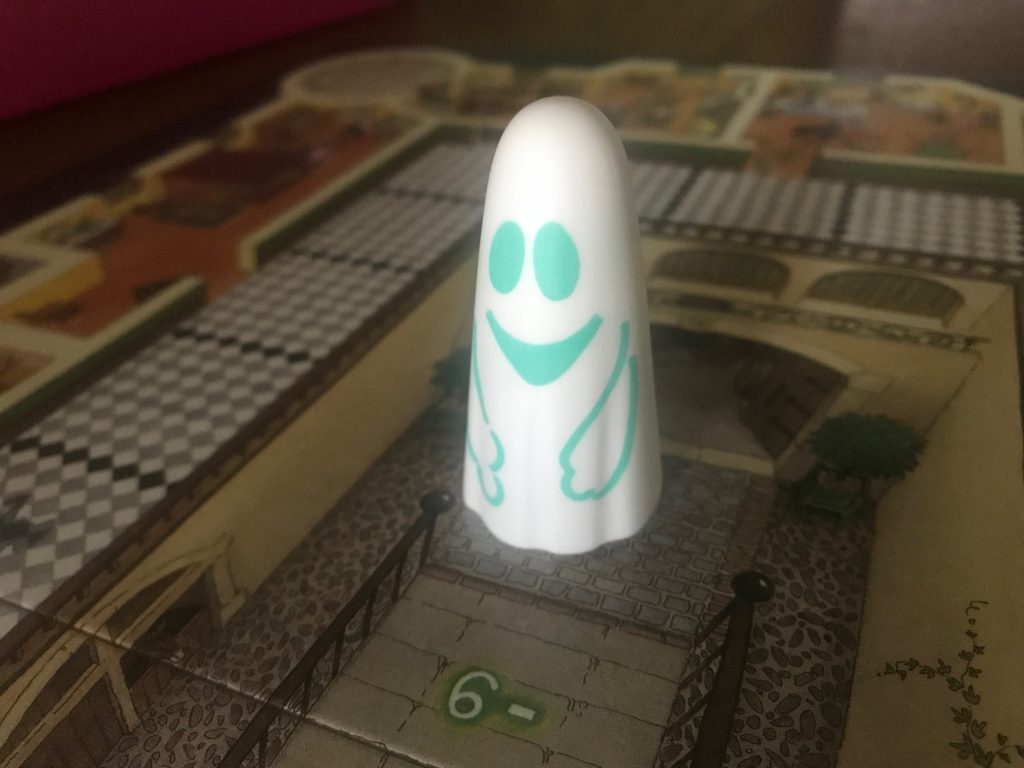
When Hugo moves, he captures every guest he passes during his movement. The first guest captured goes in the lowest section of the staircase, representing the biggest hits to your score. If Hugo captures two or more guests in the same space then they go to the same spot on the staircase. When all steps are full then guests move to the Wine Cellar instead, which gets them -2 points.
The round ends when all guests have been captured or hidden in rooms. Or until guests have nowhere left to hide. For example, if a few pawns are left but have no empty rooms to duck into then they all go straight to the wine cellar to enjoy -2 points each. Add up the points, and start the next round. After three rounds, the player with the highest score wins Ghost Party!
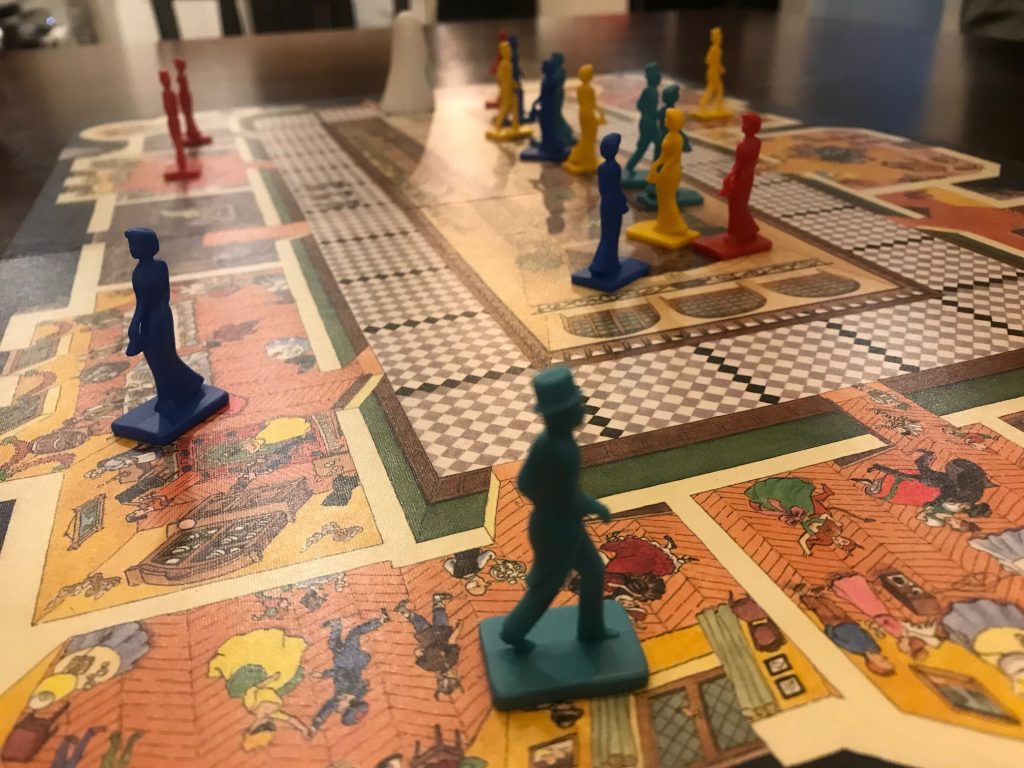
how it went
Note: Ghost Party has gone through several different names including Midnight Party (I was aware of that one, that is the first version) and Escape from Hidden Castle (I didn’t know that one, the most recent version).
We played Ghost Party just recently around the 4th of July holiday. We had only found the game recently at thrift, and Bill was very interested in reselling. But of course, only if we didn’t want to play again. So play was necessary.
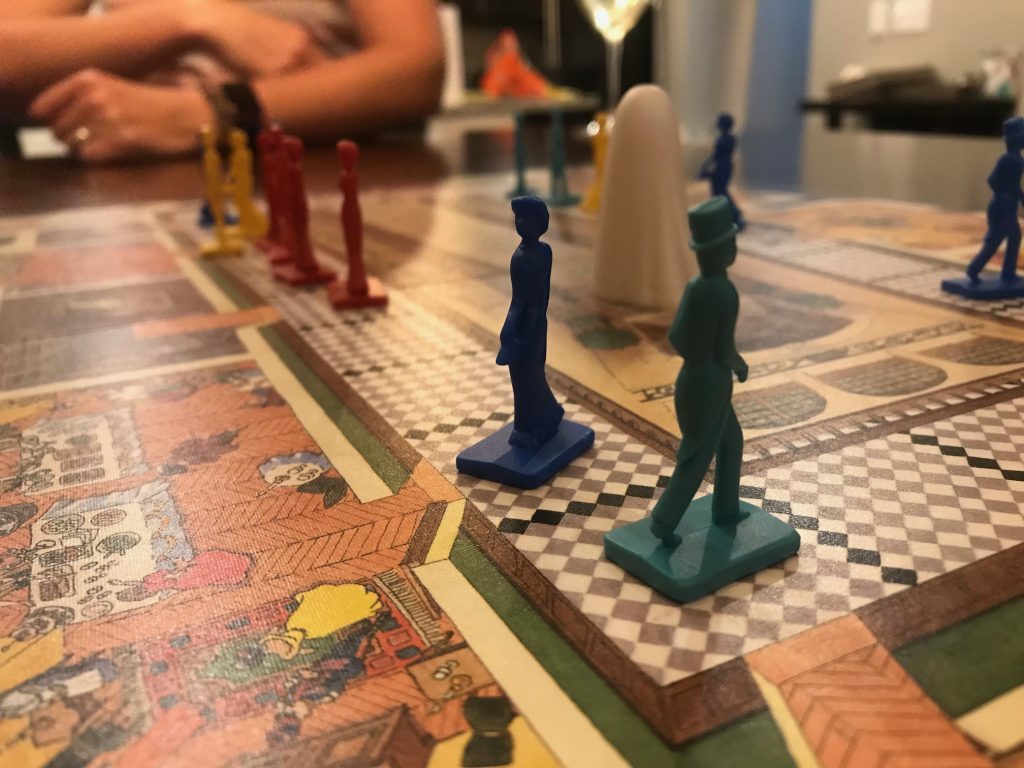
Ghost Party is a great example of a game that is simple in its approach, but can provide wildly different types of play just by strategy or chance. I have a lot of friends with kids that love to play it, so it’s accessible to multiple ages but remains interesting to most of us older folks. Ghost Party’s gameplay approach is simple, but varied.
I was surprised at how quickly Hugo could boogie around the board! Truly ghostly, he might linger at the bottom stair for a fair amount of time, or he might take leaps and bounds up the stairs and scare you on the gallery. I was surprised by this with four players, and I can only imagine how quickly he moves with eight players and how that is such a different strategy.
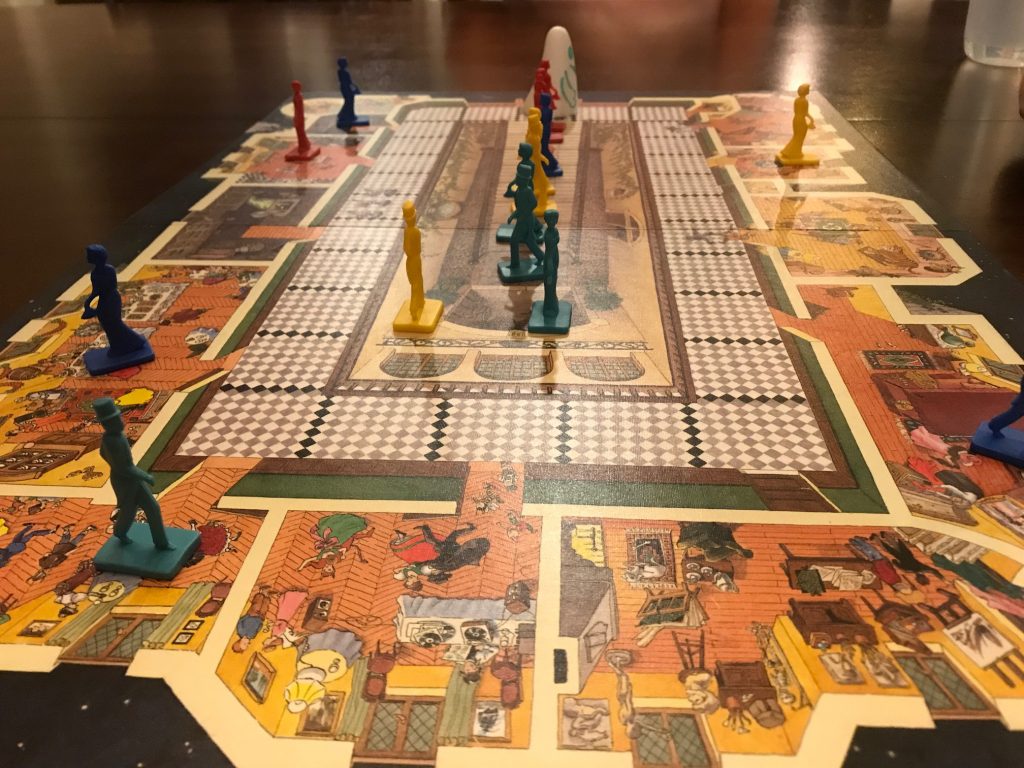
I got fairly lucky and ended up winning our first game, followed with just a 2 point difference by John. So I (barely) won Ghost Party!
play or pass
Play for sure. You don’t really need me to talk about Ghost Party in detail; a modest google will show you that the game has staying power over many player ages, over many years, and with many different languages (granted the gameplay itself doesn’t depend on language). And the only way to know if it is a good fit with you is to play it. You should play it.
